
The British passenger liner RMS Titanic leaves from Southampton, England on her maiden voyage, April 10, 1912. Titanic called at Cherbourg, France and Queenstown, Ireland before heading westward toward New York. Four days into the crossing, she hit an iceberg at 11:40 p.m., 375 miles south of Newfoundland. Just before 2:20 am Titanic broke up and sank bow-first with over a thousand people still on board. Those in the water died within minutes from hypothermia caused by immersion in the freezing ocean.(Frank O. Braynard Collection)

The luxury liner Titanic, in this photo dated 1912, as she left Queenstown for New York, on her ill-fated last voyage. Her passengers included some of the wealthiest people in the world, such as millionaires John Jacob Astor IV, Benjamin Guggenheim and Isidor Strauss, as well as over a thousand emigrants from Ireland, Scandinavia and elsewhere seeking a new life in America. The disaster was greeted with worldwide shock and outrage at the huge loss of life and the regulatory and operational failures that had led to it. The inquiry into the sinking of the Titanic began within days of the sinking and led to major improvements in maritime safety.

Workers leave the Harland & Wolff Shipyard in Belfast, where the Titanic was built between 1909 and 1911. The ship was designed to be the last word in comfort and luxury and was the largest ship afloat at the time of her maiden voyage. The ship is visible in the background of this 1911 photograph. (Photographic Archive/Harland & Wolff Collection/Cox)

A 1912 photograph of a dining room on the Titanic. The ship was designed to be the last word in comfort and luxury, with an on-board gymnasium, swimming pool, libraries, high-class restaurants and opulent cabins. (The New York Times Photo Archives/American Press Association

A 1912 photograph of a second class area on the Titanic. A disproportionate number of men – over 90% of those in Second Class – were left aboard due to a "women and children first" protocol followed by the officers loading the lifeboats. (The New York Times Photo Archives/American Press Association)
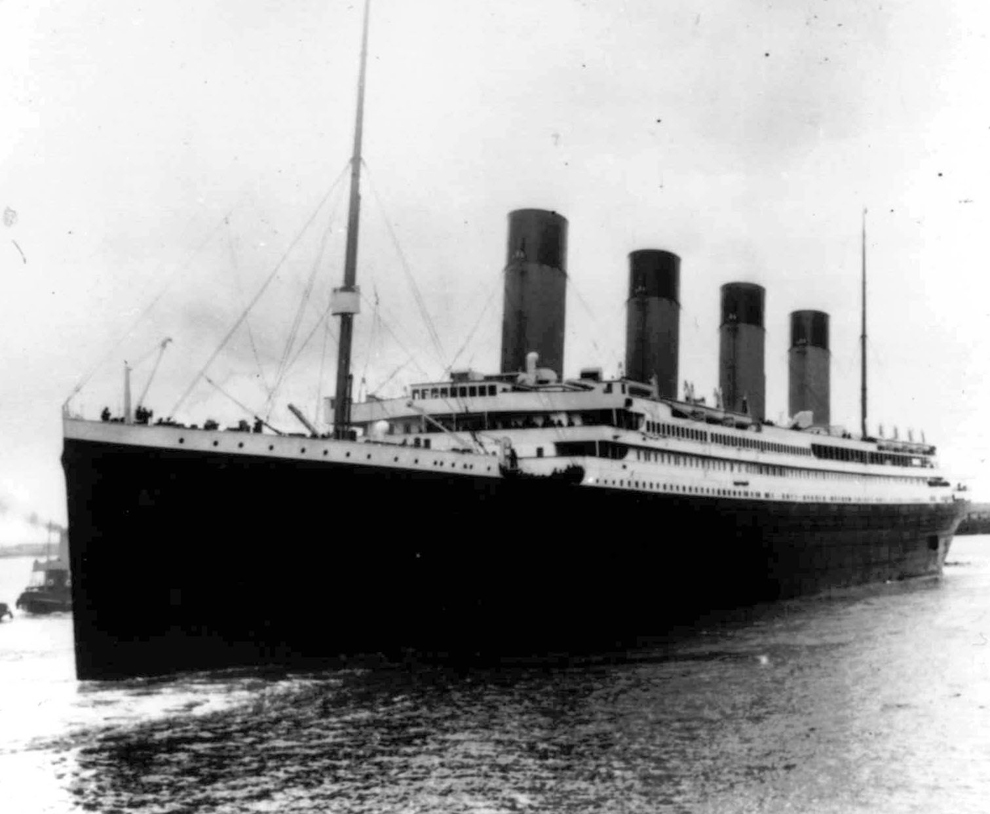
In this April 10, 1912 photo the Titanic leaves Southampton, England. The tragic sinking of the Titanic nearly a century ago can be blamed, some believe, on low grade rivets that the ship's builders used on some parts of the ill-fated liner. (Associated Press
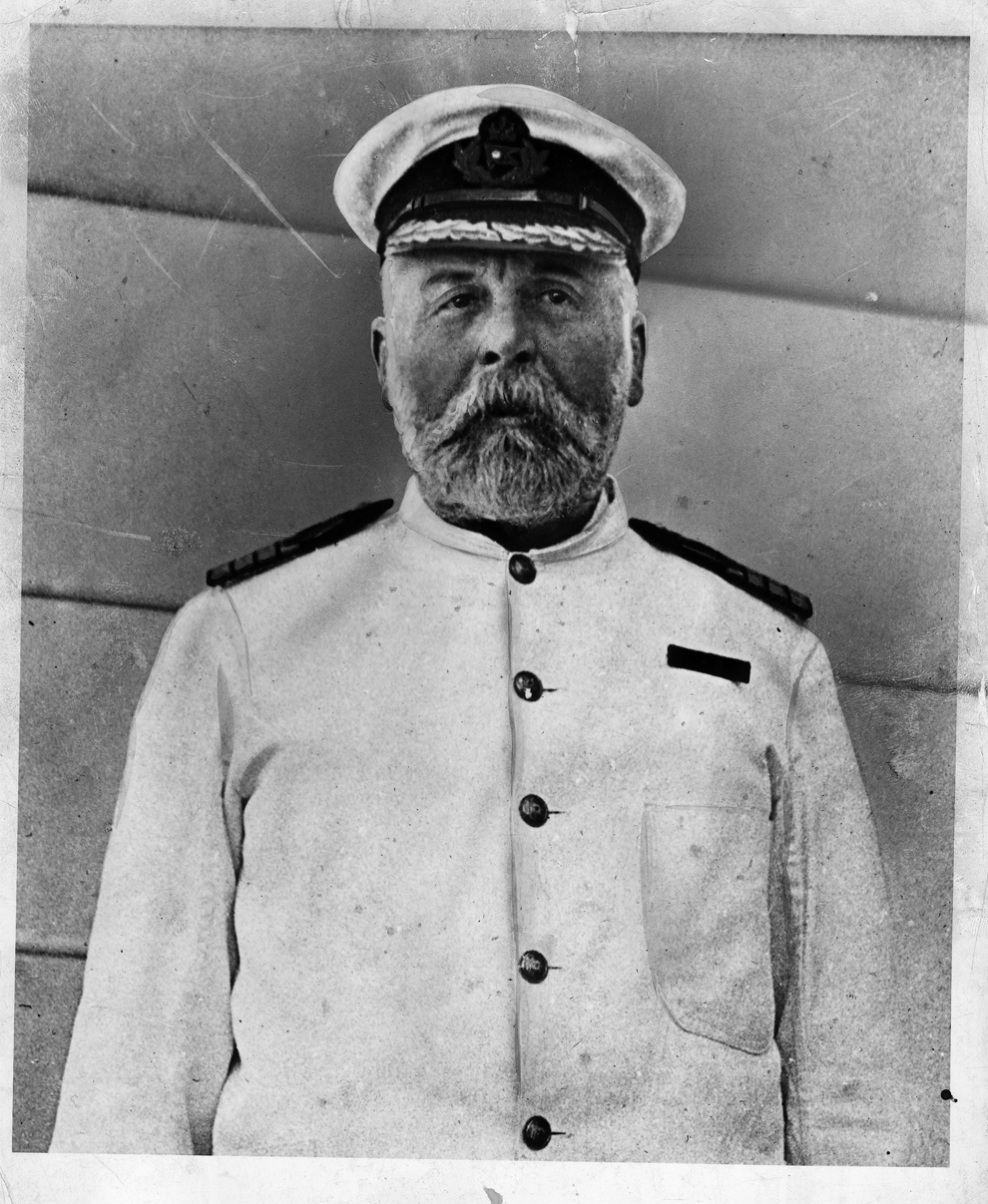
Captain Edward John Smith, commander of the Titanic. The ship he commanded was the largest afloat at the time of her maiden voyage. Titanic was a massive ship - 883 feet long, 92 feet wide, and weighing 52,310 long tons (a long ton is 2240 pounds). It was 175 feet tall from the keel to the top of the four stacks or funnels, almost 35 feet of which was below the waterline. The Titanic was taller above the water than most urban buildings of the time. (The New York Times Archives)

An undated photo of Titanic First Officer William McMaster Murdoch, who is treated as a local hero in his native town of Dalbeattie, Scotland, but was portrayed as a coward and a murderer in the multi-Oscar winning movie, Titanic. At a ceremony on the 86th anniversary of the ship's sinking, Scott Neeson, the executive vice-president of the film's makers 20th Century Fox, presented a check for five thousand pounds ($8,000 US dollars) to the Dalbeattie school as an apology to the bridge officer's relatives. (Associated Press)

This is believed to be the iceberg that sank the Titanic on April 14-15, 1912. The photograph was taken from the deck of the Western Union Cable Ship, Mackay Bennett, commanded by Captain DeCarteret. The Mackay Bennett was one of the first ships to reach the scene of the Titanic disaster. According to Captain DeCarteret, this was the only berg at the scene of the sinking when he arrived. It was assumed, therefore, that it was responsible for the sea tragedy. The glancing collision with the iceberg caused Titanic's hull plates to buckle inward in a number of locations on her starboard side and opened five of her sixteen watertight compartments to the sea. Over the next two and a half hours, the ship gradually filled with water and sank. (United States Coast Guard
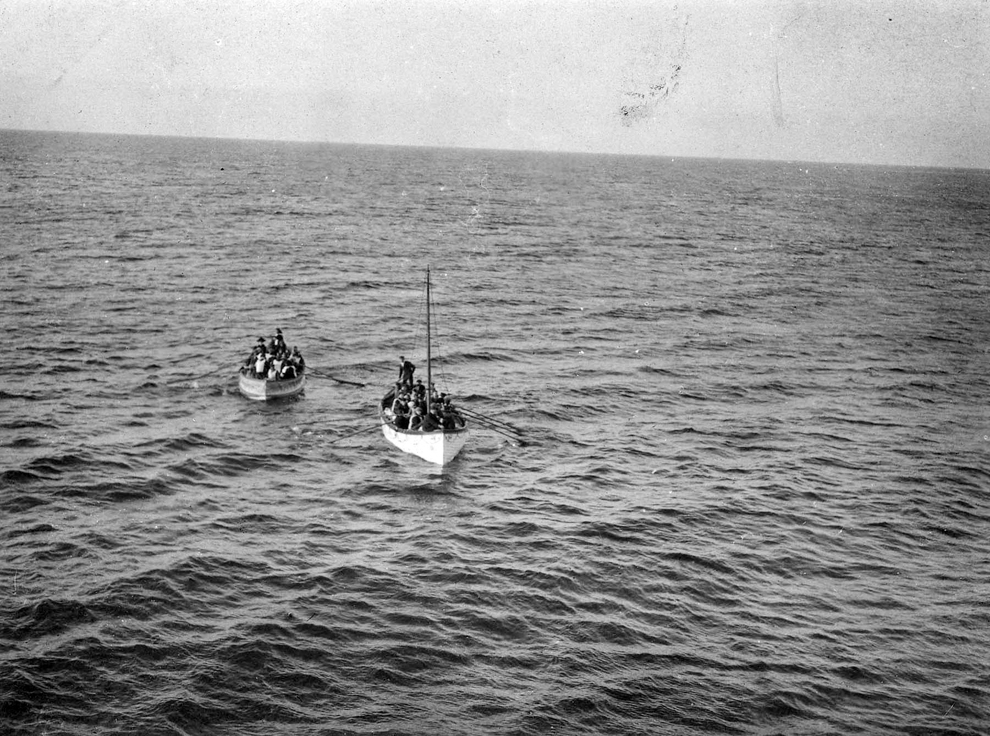
Passengers and some crew members were evacuated in lifeboats, many of which were launched only partly filled. This photograph of Titanic lifeboats approaching the rescue ship Carpathia, was taken by Carpathia passenger Louis M. Ogden and was on display during a 2003 exhibition of images related to the Titanic disaster (bequeathed to the National Maritime Museum in Greenwich, England, by Walter Lord). (National Maritime Museum/London
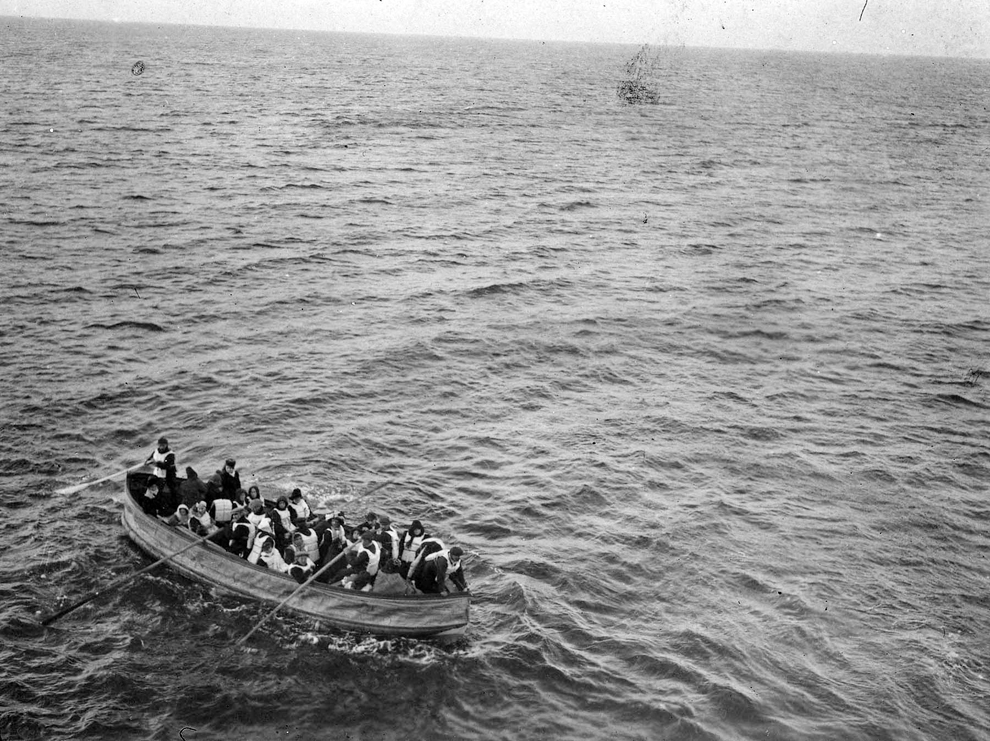
Seven hundred and twelve survivors were taken aboard from the lifeboats by the RMS Carpathia. This photograph taken by Carpathia passenger Louis M. Ogden shows Titanic lifeboats approaching the rescue ship, Carpathia. The photo was part of a 2003 exhibition bequeathed to the National Maritime Museum in Greenwich, England, by Walter Lord. (National Maritime Museum/London)

Though Titanic had advanced safety features such as watertight compartments and remotely activated watertight doors, she lacked enough lifeboats to accommodate all of those aboard. Due to outdated maritime safety regulations, she carried only enough lifeboats for 1,178 people – a third of her total passenger and crew capacity. This Sepia photograph depicting the recovery of Titanic passengers is among memorabilia set to go under the hammer at Christies in London, May 2012. (Paul Treacy/ EPA/PA
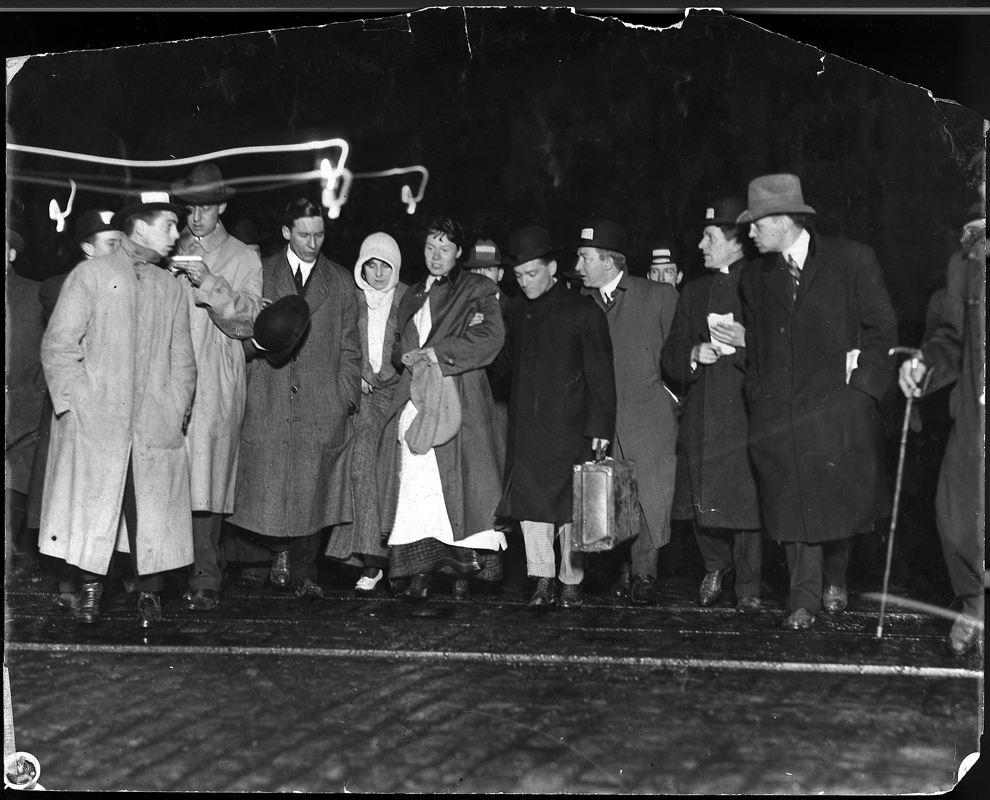
Members of the press interview Titanic survivors coming off the rescue ship, The Carpathia, April 17, 1912. (American Press Association)

Eva Hart is pictured as a seven-year-old in this photograph taken in 1912 with her father, Benjamin, and mother, Esther. Eva and her mother survived the sinking of the British liner Titanic on April 14, 1912 off Newfoundland, but her father perished in the disaster. (Associated Press)

People stand on the street during Titanic disaster, awaiting the arrival of the Carpathia. (The New York Times Photo Archives/Times Wide World)
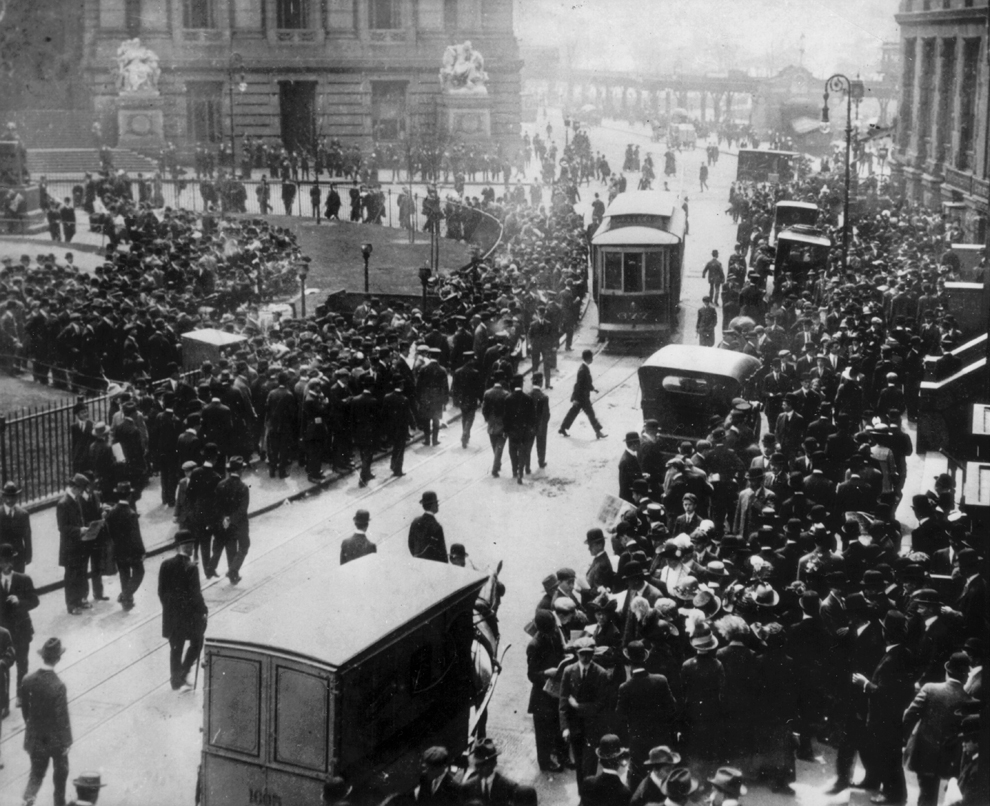
A huge crowd gathered in front of the White Star Line office in New York's lower Broadway to get the latest news on the sinking of the luxury liner Titanic on April 14, 1912. (Associated Press
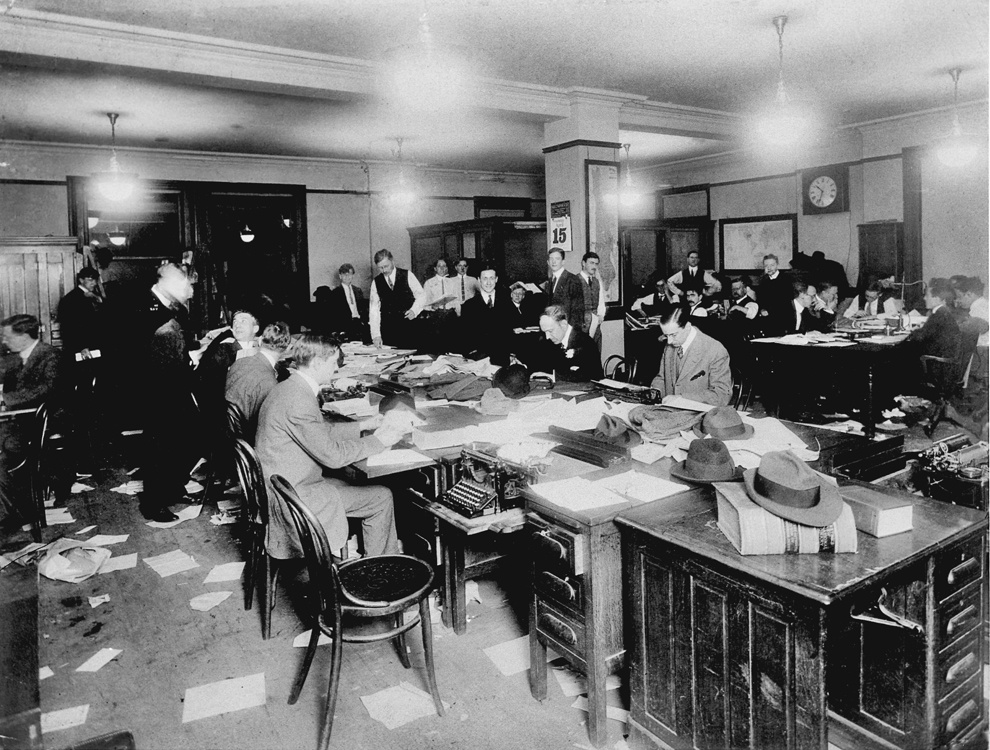
The New York Times newsroom at the time of the sinking of the Titanic, April 15, 1912. (The New York Times Photo Archives)
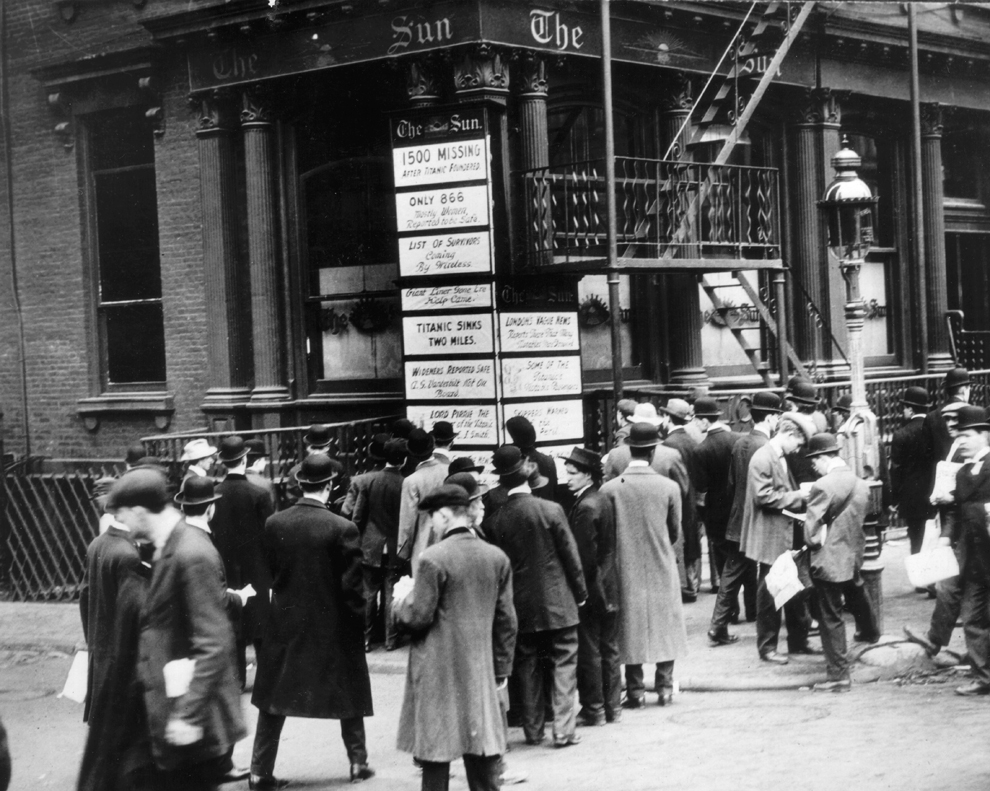
After the sinking of the Titanic, crowds read bulletins in front of the Sun Building in New York City. (The New York Times Photo Archives
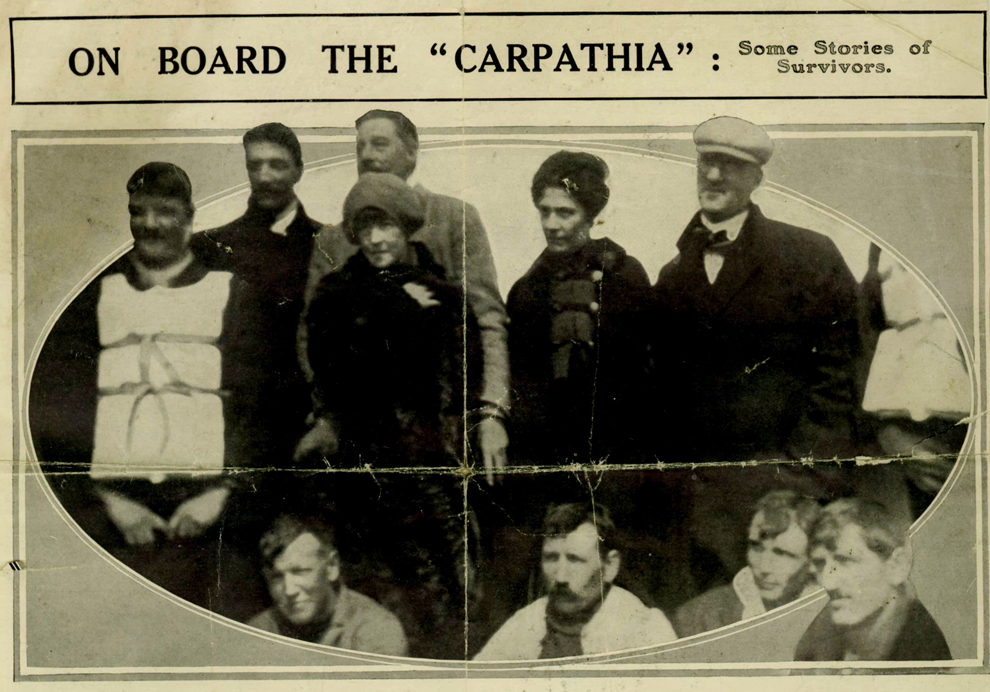
Titanic survivors Laura Francatelli, and her employers Lady Lucy Duff-Gordon and Sir Cosmo Duff-Gordon, while standing on the rescue ship, Carpathia. Francatelli reported hearing a terrible rumbling noise, then anguished cries for help as her rowboat pulled away from the sinking ocean liner Titanic that dreadful night in 1912. (Associated Press/Henry Aldridge and Son/Ho)
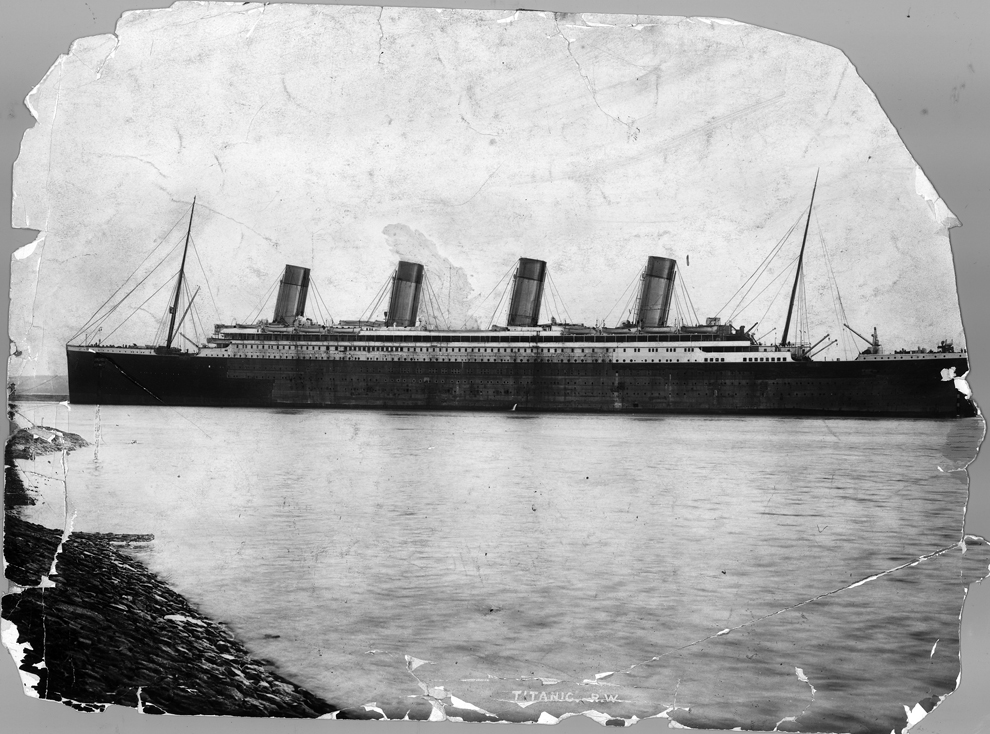
This vintage print shows the Titanic shortly before leaving on her maiden voyage in 1912. (New York Times Archives)
The Boston Globe
Comments